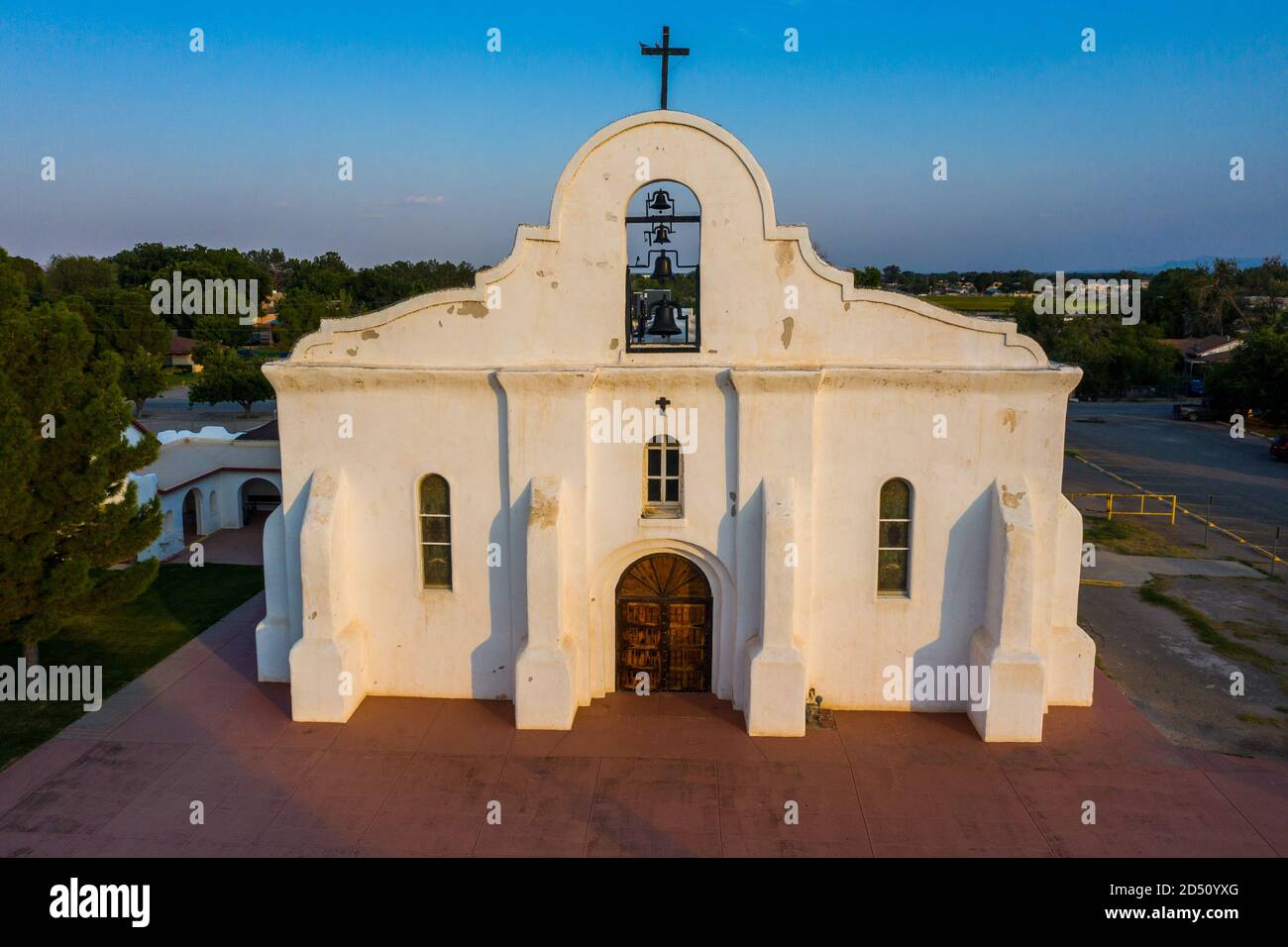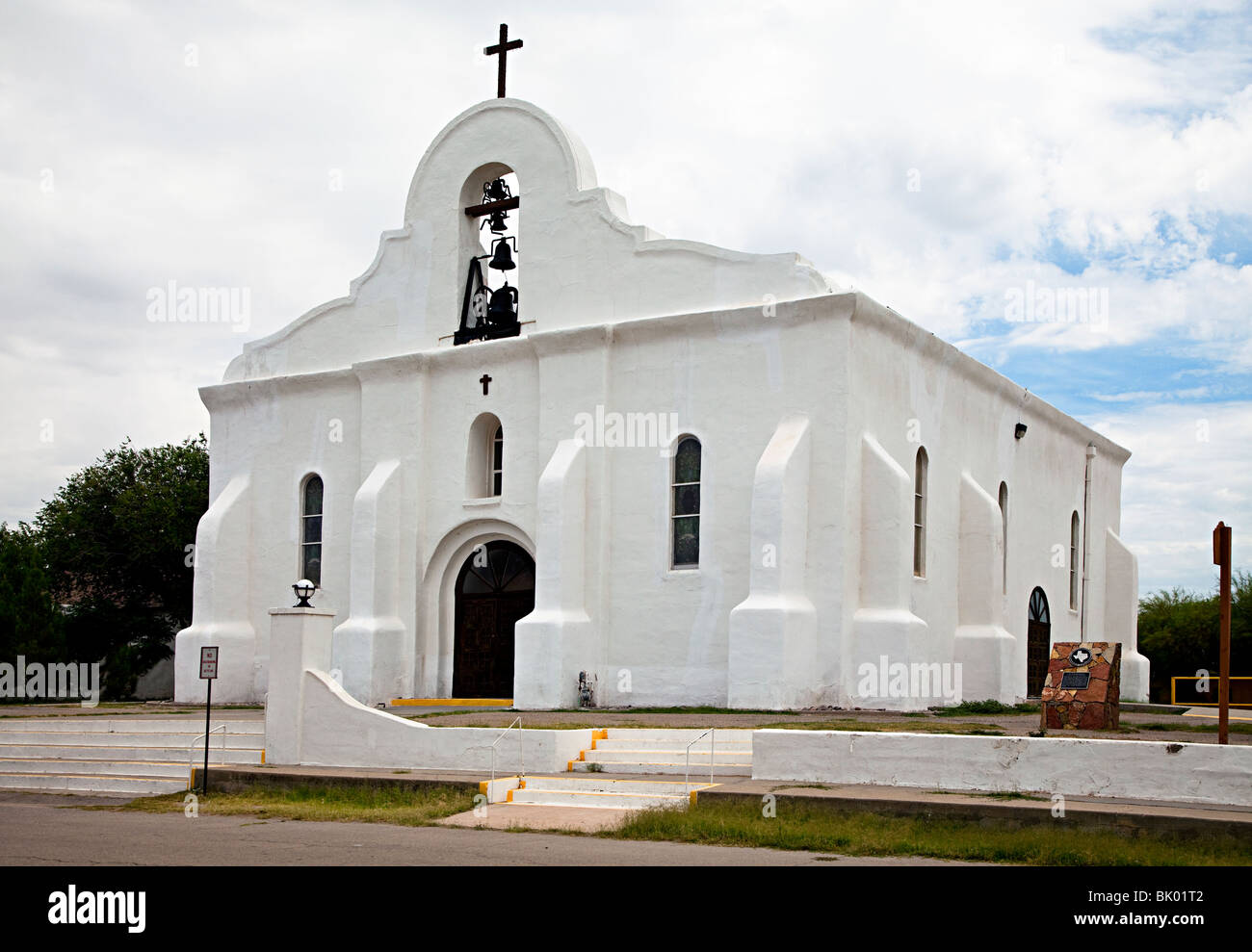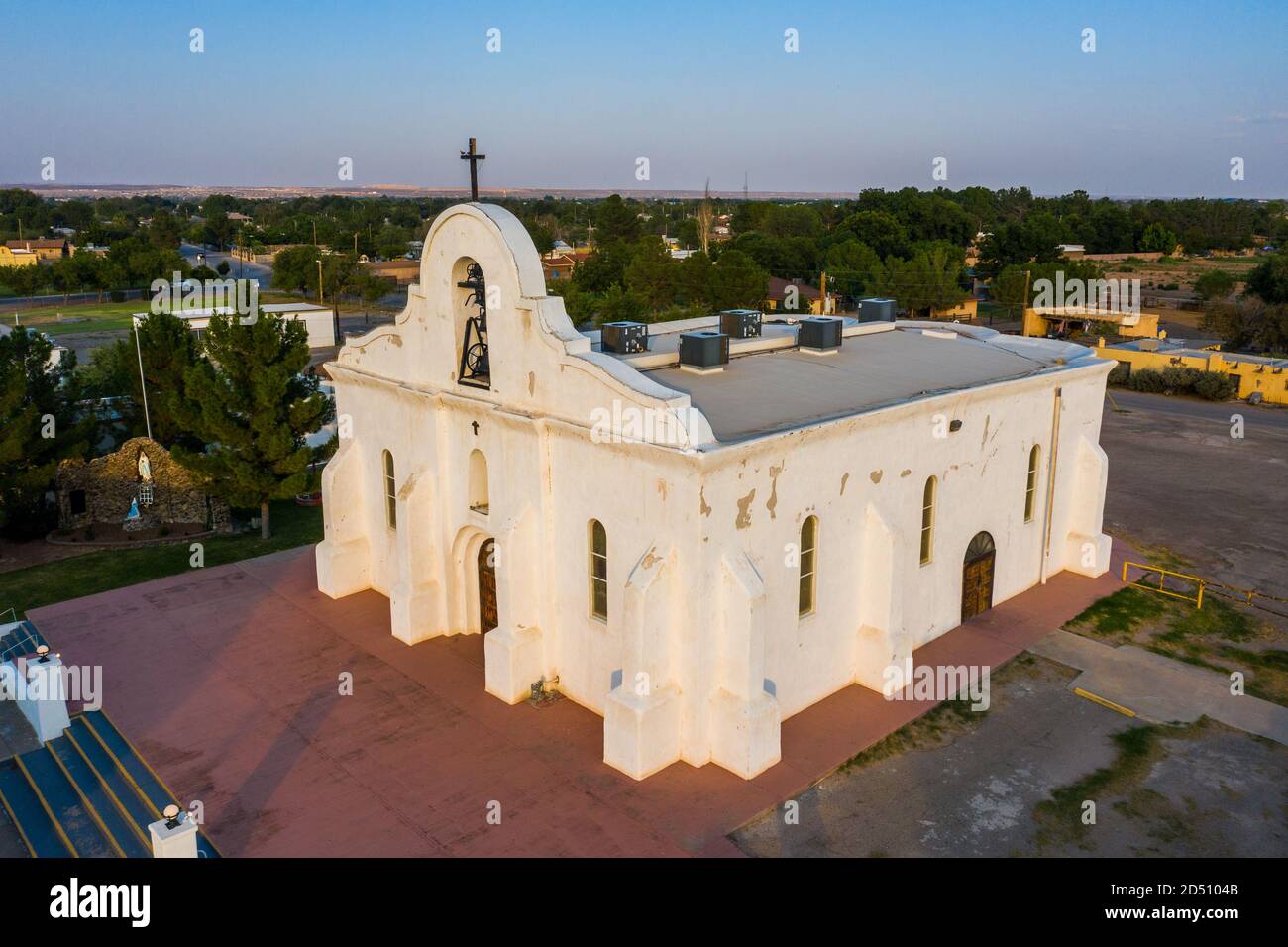
San Elizario, Texas: The Unfolding Tapestry of American History
Far from the neon glow of modern cities and the sprawling highways that crisscross the American Southwest, a quiet, unassuming town holds the keys to centuries of history. San Elizario, Texas, a blink-and-you-miss-it community nestled along the historic Mission Trail in El Paso County, is more than just a dot on the map; it is one of the oldest continuously inhabited communities in Texas, a living archive of Spanish colonial ambition, Mexican heritage, and American grit.
To step into San Elizario is to step back in time. The air hums with a silent narrative, carried on the desert breeze that rustles through the cottonwoods lining the Rio Grande. Sun-baked adobe structures, some centuries old, stand as stoic witnesses to an unfolding drama that predates Plymouth Rock and Jamestown. Here, history isn’t just displayed in museums; it breathes in the venerable walls of its presidio, echoes in the quiet reverence of its mission church, and lives in the stories of its resilient people.

A Cradle of Civilization on El Camino Real
San Elizario’s story begins not in Texas, but in New Mexico. Its roots stretch back to 1598, when Don Juan de Oñate, a Spanish explorer and colonial administrator, led a vast expedition of soldiers, missionaries, and settlers northward from Zacatecas, Mexico, to establish the colony of New Mexico. On April 30, 1598, Oñate’s expedition held a formal "Thanksgiving" feast and a solemn declaration of possession near the banks of the Rio Grande, just south of what is now San Elizario. This event, predating the Pilgrim’s Thanksgiving by 23 years, marked a pivotal moment in the Spanish colonization of the American Southwest and the establishment of El Camino Real de Tierra Adentro—the Royal Road of the Interior Land—a vital trade and communication route that connected Mexico City to Santa Fe.
The settlement that would become San Elizario began as a presidio, a military fort, established in 1789. Named Presidio de San Elizario (after Saint Elzear, a French saint), it was strategically located to protect the Spanish settlers and missionaries from Apache and Comanche raids, and to safeguard the crucial El Camino Real. Unlike many presidios that were temporary outposts, San Elizario grew into a permanent community, a testament to its strategic importance and the determination of its inhabitants.
"San Elizario isn’t just a collection of old buildings; it’s a living archive of a pivotal chapter in North American history," explains Dr. Elena Ramirez, a local historian and preservationist, her voice filled with quiet passion. "This was the frontier, the very edge of Spanish influence, and the people here built a life, defended their homes, and cultivated a unique culture that blended indigenous traditions with European Catholicism."
The Salt War and Billy the Kid’s Shadow
While its origins are grand, San Elizario’s history is also marked by conflict and legend. One of the most significant events in its past is the San Elizario Salt War of 1877. The conflict erupted over access to the lucrative salt lakes (Las Salineras) located about 100 miles east of El Paso. For centuries, the local Hispanic population had freely harvested salt from these lakes, considering it a communal resource. However, American entrepreneurs sought to privatize the salt beds, leading to a bitter and violent dispute that pitted local residents against a small group of Anglo businessmen and their allies, including Texas Rangers.
The Salt War, though relatively short-lived, was a brutal affair that saw assassinations, skirmishes, and a siege of the presidio church, where locals had taken refuge. It highlighted the deep cultural and economic clashes occurring as Anglo settlers moved into historically Hispanic territories. The conflict ultimately led to the suppression of the local population’s traditional rights and remains a poignant reminder of the struggles over land and resources in the American West.
Adding a touch of outlaw lore to San Elizario’s narrative is its brief, yet intriguing, connection to Billy the Kid. In late 1876, the notorious outlaw, then known as Henry McCarty, was arrested in El Paso and briefly held in San Elizario’s jail, which was located within the presidio. While his stay was short, the fact that one of the West’s most famous figures walked these very streets adds another layer of mystique to the town’s already rich history.

The Mission Trail: A Spiritual and Architectural Journey
San Elizario is the final, and in many ways, the most serene stop on the El Paso Mission Trail, a designated historic route that includes the Ysleta Mission (established 1682), the Socorro Mission (established 1682), and the San Elizario Presidio Chapel (established 1877, though its origins trace back to the presidio chapel built in 1789). These three missions represent the oldest continuously active churches in Texas, standing as enduring symbols of faith and resilience.
The current San Elizario Presidio Chapel, Nuestra Señora de Guadalupe, is a beautiful example of Spanish colonial architecture with a distinctive adobe facade and a bell tower that beckons visitors from afar. While the original presidio chapel was swept away by a flood of the Rio Grande in 1829, the community rebuilt, demonstrating their unwavering commitment to their faith and their home. The current structure, completed in 1877, stands on the site of the former presidio, embodying the spirit of the original.
"When people come here, they often say it feels different," says Maria Sanchez, who runs a small art gallery near the chapel. "It’s not just old; it’s alive. Like the past is still very present, whispering its stories through the wind and the light that filters into the chapel."
San Elizario Today: A Quiet Gem
Today, San Elizario maintains an unhurried pace, a stark contrast to the bustling city of El Paso just a short drive away. The town’s charm lies in its authenticity and its commitment to preserving its heritage. The historic central plaza, anchored by the Presidio Chapel, is a focal point, surrounded by other historic buildings that have been repurposed into art galleries, small shops, and cultural centers.
Artists have been particularly drawn to San Elizario, finding inspiration in its timeless beauty and tranquil atmosphere. The light here, characteristic of the desert Southwest, illuminates the adobe in hues of ochre and rose, creating a painter’s dreamscape. The quiet allows for contemplation, a connection to the raw, untamed spirit of the frontier.
"The light here, the quiet, the history – it seeps into your soul and into your art," explains Ricardo Perez, a local sculptor whose work often incorporates elements of the region’s history. "There’s a sense of permanence here, of deep roots that you don’t find everywhere."
Local initiatives are actively working to promote San Elizario as a cultural tourism destination. Annual festivals, art walks, and historical reenactments draw visitors who seek a deeper understanding of Texas’s origins. However, the town faces the delicate balance of attracting tourism while maintaining its unique character and preserving its fragile historic structures. Funding for preservation, marketing, and infrastructure remains a constant challenge.
A Call to Rediscover
San Elizario, Texas, is more than just a historical footnote; it is a vibrant, living testament to the enduring human spirit. It is a place where the echoes of Spanish conquistadors, resilient settlers, fierce indigenous warriors, and even infamous outlaws intertwine to form a unique narrative. It offers a powerful counter-narrative to the often-Anglo-centric view of American history, reminding us of the profound and foundational contributions of Hispanic culture to the fabric of the nation.
For those willing to venture off the beaten path, San Elizario offers a journey not just through space, but through time. It is a profound reminder that the most significant stories are often found not in grand pronouncements, but in the quiet, sun-drenched corners of the world, waiting patiently to be discovered. San Elizario whispers its history, inviting all who listen to become part of its unfolding tapestry. It’s a place that asks you to slow down, to feel the weight of centuries, and to appreciate the profound roots of a truly American story.


